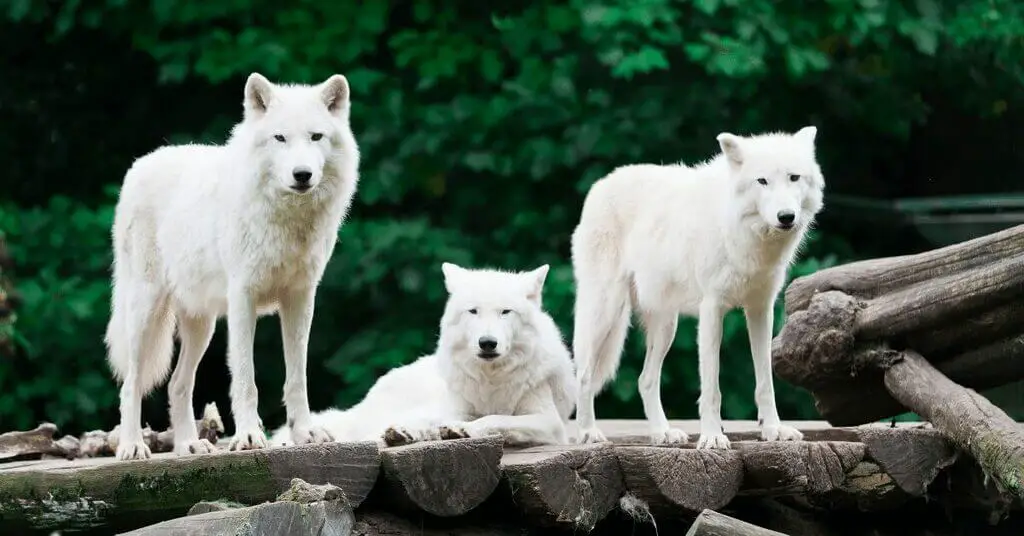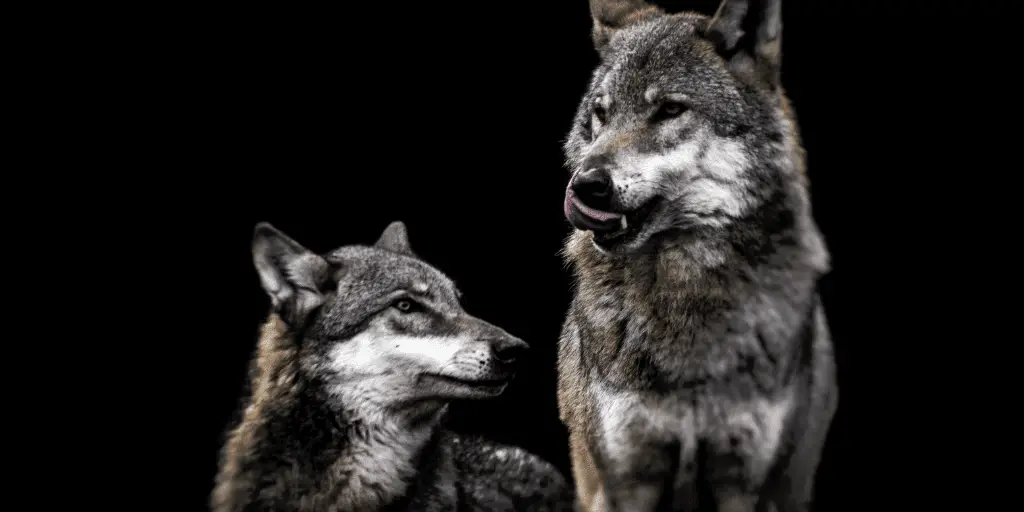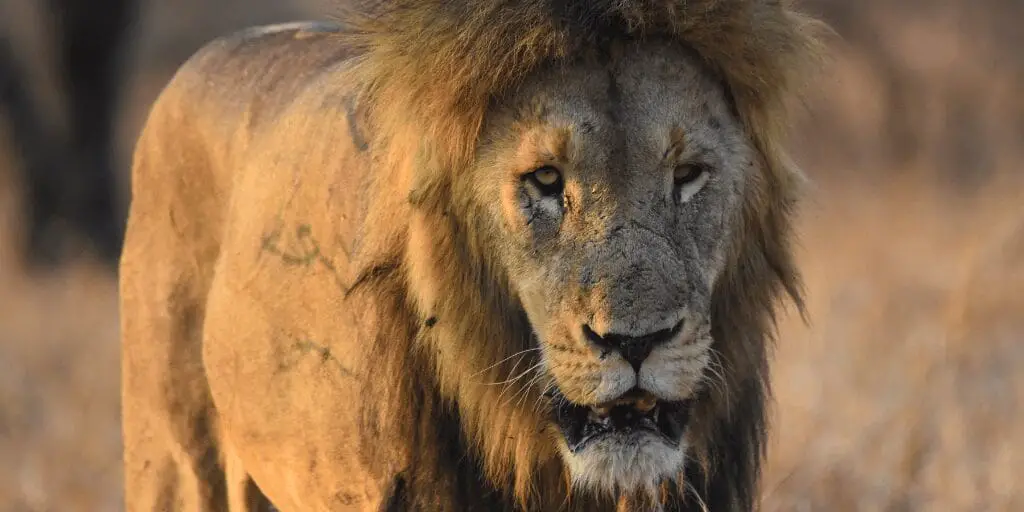Animals have always played a big role in stories and myths from around the world. Different cultures use animals to symbolize human qualities, natural forces, and spiritual ideas. For example, a lion might stand for bravery, while a snake could represent both creation and destruction.
Understanding these symbols helps us learn more about the beliefs and values of different cultures. This article will explore the fascinating world of animal symbolism and mythology, showing how animals are more than just creatures; they are powerful symbols that connect us to the world around us.
Wolves in Mythology and Symbolism
Wolves are powerful symbols in many cultures and myths. They can represent loyalty, courage, and intelligence, but sometimes they are seen as symbols of danger and fear. White wolves often symbolize purity and guidance, while black wolves can represent mystery and strength.
Wolves in dreams can have special meanings too, often showing our inner thoughts and fears. For Native Americans, wolves have a deep connection to their culture and traditions, sometimes even seen as spiritual guides.
Exploring the symbolism of wolves helps us understand their important role in stories and beliefs around the world.
White Wolves

White wolves hold significant symbolic meanings in various cultures. They often represent purity, spirituality, and transformation. In many Native American traditions, the white wolf is revered as a powerful spiritual symbol.
It is seen as a guardian spirit offering guidance and protection. The color white symbolizes purity and spiritual enlightenment, making the white wolf a sacred animal that connects the physical and spiritual worlds.
Additionally, white wolves represent profound personal change and the journey toward self-discovery.
In Norse mythology, wolves symbolize strength and courage. A white wolf, with its rare and striking appearance, can symbolize exceptional bravery and the ability to stand out.
The white wolf can also be seen as a mystical creature, bridging the gap between the natural and supernatural worlds.
In Celtic traditions, wolves are revered for their intelligence and connection to the natural world. The white wolf, in particular, can symbolize lunar themes, embodying the mysteries and cycles of the moon. It also represents heightened intuition and inner wisdom.
In Eastern cultures, the white wolf can represent balance and harmony, embodying the concept of yin and yang.
It is also seen as a spiritual guardian that protects and guides individuals on their spiritual journey. To explore more about the symbolism of white wolves, check out What Does a White Wolf Symbolize?.
Black Wolves

Black wolves hold a significant place in folklore and mythology across various cultures. They often symbolize mystery, power, and transformation. The dark coats of black wolves evoke a sense of the unknown and mystical, often linked to moonlit nights and shadowy forests.
This aura of mystery makes them symbols of ancient secrets and wisdom. The color black is powerful and commanding, adding to the black wolf’s formidable presence.
Black wolves are also seen as symbols of survival and independence. They are often depicted as solitary creatures, embodying self-sufficiency and resilience.
Black wolves are known for their ability to endure harsh conditions and thrive against the odds, making them powerful symbols of adaptability and perseverance.
In many cultures, black wolves symbolize freedom and fearlessness. The image of a black wolf roaming freely across vast landscapes represents the quest for self-discovery and personal freedom. They symbolize the courage to face darkness and embrace one’s true nature without fear.
In dreams and myths, black wolves can represent leadership and authority. They may appear as guides or symbols of one’s leadership qualities, urging individuals to take charge of their lives and assert their power.
In Native American cultures, wolves, including black wolves, are revered for their bravery and wisdom. They are seen as spiritual guides and protectors.
In Norse mythology, black wolves are often associated with destruction and chaos, like Fenrir, who is prophesied to bring about Ragnarök. Despite their destructive nature, wolves in Norse myths also symbolize loyalty and protection.
In contemporary culture, black wolves continue to be powerful symbols. They are often depicted in literature and media as embodiments of the wild, untamed aspects of nature and the human psyche.
To learn more about the symbolism of black wolves, visit What Does a Black Wolf Symbolize?.
Wolves in Dreams
Wolves in dreams can have many meanings, reflecting our emotions and instincts. They often symbolize our wild, untamed side, showing parts of ourselves that are hard to control or understand. This can include feelings of strength, aggression, and the natural drive to survive.
Wolves can also represent powerful spiritual and emotional energy. They might guide us on our journey of personal growth and self-discovery. This spiritual connection is often linked to the moon, a common symbol in wolf mythology.
Since wolves live in packs, dreaming of wolves can reflect our social relationships and dynamics. For instance, being part of a wolf pack in a dream might show our need for acceptance and belonging, while a lone wolf could symbolize independence or isolation.
Sometimes, wolves in dreams can represent fear or threats. An aggressive or threatening wolf might reflect our anxieties or challenges we need to confront. It can symbolize feeling pursued or threatened by someone or something in our waking life.
However, wolves can also have positive meanings. They might appear as guides or protectors, offering wisdom and support. This is often seen in dreams where the wolf is friendly or protective, symbolizing help from others in facing difficulties. To learn more about the symbolism of wolves in dreams, visit What Do Wolves Symbolize in Dreams?.
Wolves and Native Americans
The relationship between Native Americans and wolves is deep and complex, involving cultural significance, spiritual beliefs, and even aspects of domestication.
Wolves hold powerful symbolism in Native American culture. They are admired for their strength, intelligence, leadership, and loyalty. Many tribes see the wolf’s dedication to its pack as a mirror of human values, especially the importance of family and community.
Wolves are often viewed as spiritual beings and totems, believed to be connected to the spirit world, offering guidance and protection. For instance, the Navajo see the wolf as both a powerful spirit and a healer, while the Ojibwe believe that whatever happens to wolves will also affect their tribe.
Wolves feature prominently in Native American myths and legends. Stories often depict wolves as teachers who share survival skills with humans. The Cheyenne, Lakota, and Pawnee tribes have tales of wolves teaching them how to hunt.
The Pawnee even call themselves the “Wolf People,” highlighting their close relationship with these animals.
Regarding domestication, early interactions between Native Americans and wolves were marked by mutual respect. Wolves and humans shared food and hunting grounds, leading to a cooperative relationship.
This mutual respect likely played a role in the domestication process, evolving wolves into the dogs we know today. To learn more about whether Native Americans domesticated wolves, visit Did Native Americans Domesticate Wolves?.
The Tasmanian Devil

The Tasmanian devil, a unique carnivorous marsupial from Tasmania, is rich in mythological and symbolic meanings.
In Tasmanian Aboriginal mythology, the Tasmanian devil was seen as a greedy scavenger. This image is very different from the fierce reputation given by European settlers who were startled by the devil’s loud screeches and aggressive behavior.
They named it “devil” and spread stories of it being a threat to livestock, which added to its fearsome image.
The Tasmanian devil symbolizes persistence and resilience. Despite facing threats like habitat loss and a deadly disease called Devil Facial Tumor Disease (DFTD), these animals continue to survive, showing remarkable tenacity.
They also represent ferocity and determination, especially during feeding, where their aggressive behavior highlights their relentless nature.
Tasmanian devils are solitary animals, symbolizing independence and self-reliance. They usually come together only to mate or feed, emphasizing their ability to survive alone. Their unique presence in Tasmania also adds to their mystique and symbolizes the unknown and mysterious aspects of nature.
In popular culture, the Tasmanian devil is famously represented by the Looney Tunes character “Taz,” known for his chaotic energy and whirlwind behavior. This portrayal, although exaggerated, has helped spread the devil’s image worldwide.
To learn more about the origins of the name Tasmanian Devil, visit Where Did the Name Tasmanian Devil Come From? .
Other Notable Animals in Mythology

Throughout various cultures, animals have held significant symbolic meanings, each embodying unique qualities and attributes.
Lions: Lions symbolize power and courage. In ancient Greece and Rome, the Nemean lion, slain by Heracles, represented strength and bravery. In Egyptian mythology, lions were connected to the sun god Ra, symbolizing royalty and power. In Christianity, lions symbolize both the might of Christ and the threat of Satan, reflecting the dual nature of good and evil.
Eagles: Eagles are symbols of freedom and vision. In Native American cultures, eagles are sacred messengers between humans and the divine, representing spiritual connection. In Greek and Roman mythology, eagles are associated with Zeus and Jupiter, symbolizing authority and divine power. In Christianity, eagles represent hope, strength, and salvation.
Snakes: Snakes have a dual symbolism of creation and destruction. In ancient Egyptian mythology, the snake goddess Wadjet represented wisdom and royalty. In Greek mythology, snakes were linked to Asclepius, the god of healing.
In Christianity, snakes symbolize temptation and evil but also represent the duality of life. In Norse mythology, the Midgard Serpent symbolizes the cyclical nature of life and death.
Rabbits: Rabbits symbolize fertility and rebirth. In ancient Egyptian mythology, rabbits were sacred to the goddess Isis, representing new life. In Celtic mythology, rabbits were linked to the moon and fertility.
In Native American cultures, rabbits symbolized abundance and cleverness. In Chinese culture, the rabbit is one of the twelve zodiac animals, symbolizing longevity and good fortune.
These animals continue to influence human imagination and spirituality through their rich mythological and symbolic meanings.
Conclusion
Animals have always held a significant place in mythology and symbolism across various cultures, embodying a wide range of meanings and attributes. Wolves, for instance, symbolize loyalty, strength, and spiritual guidance in Native American culture, while the Tasmanian devil represents persistence, ferocity, and independence.
Other notable animals also carry deep symbolic meanings: lions symbolize power and courage, eagles represent freedom and vision, snakes embody both creation and destruction, and rabbits signify fertility and rebirth.
By exploring these diverse symbols, we gain a deeper understanding of how different cultures view and interpret the natural world, reflecting their values, beliefs, and the interconnectedness of all living beings.
This rich tapestry of animal symbolism continues to inspire and influence our perceptions and storytelling, highlighting the enduring bond between humans and the animal kingdom.

